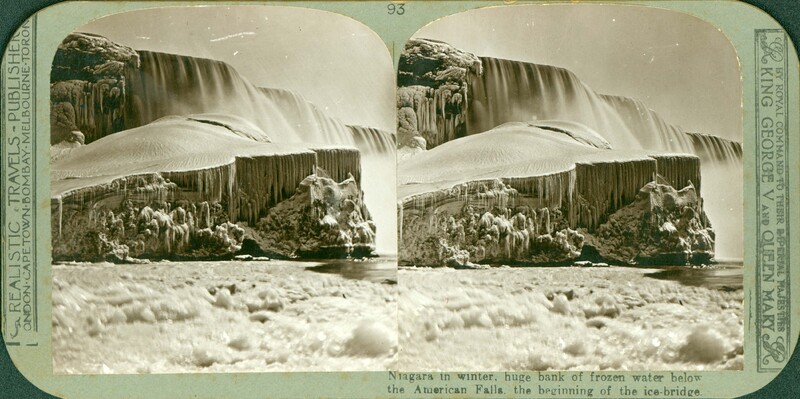Niagara in Winter
Niagara is renowned for its natural beauty. During the cold winter months, ice and snow alter the landscape. Mist from the Falls drifts and settles in surrounding parks coating trees and bridges in ice. With the right weather conditions, an ice bridge would form below the Falls when enough ice accumulated between the American and Canadian shores. This winter wonderland would attract tourists who wanted to see the spectacle of the Falls transformed by winter.
While beautiful, the ice and snow would also prove to be dangerous and destructive. The solid blocks of ice were not always as stable as they appeared. Ice in the Niagara River could wreak havoc on bridges and hydroelectric power plants. As people became more aware of these hazards, more caution was exercised and better engineering practices developed.

